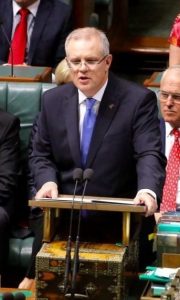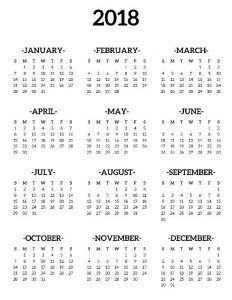Introduction
On the first Tuesday of every May, the Commonwealth treasurer stands up in Parliament and delivers the federal budget. This is an event of enormous importance to the nation, and the media get themselves into a frenzy before and immediately after the big night.
Parliament and delivers the federal budget. This is an event of enormous importance to the nation, and the media get themselves into a frenzy before and immediately after the big night.
Your household budget doesn’t have quite the same national importance. However, from your point of view, your personal household budget is much more important than anything the Treasurer says in any given year.
Your personal budget concentrates on two things: your income and your expenditure. Obviously, you need your income to exceed your expenditure if you want to get ahead financially. But many people struggle to identify exactly what their income and expenditures are. Budgeting is a way of recording past income and expenditure and using these records to predict future income and expenditure.
There are many advantages to budgeting. The obvious one is that budgeting lets you make better financial plans. Put simply, budgeting tells you how much you can afford to spend. Sometimes, budgeting has some bad news: you can’t afford to spend what you’d like to spend. Other times, it has some good news. Many people have realised that they can loosen the purse strings a little, or afford to ramp up their investment or superannuation contributions. But they crunch the numbers first.
Looked at from the other direction, budgeting might tell you how much you need to earn to live the lifestyle you want. Many people have been inspired to increase their income when they calculate their present and future cost of living.
Either way, budgeting gives you very important information about your financial management.
Knowledge is power, and budgets provide powerful knowledge.
The really good news is that, despite what you might think, budgeting is really easy. If you can use a calculator you can complete a budget. This simple e-book is designed to show you how you can create your own income and expenditure budget and start to take control of your personal finances.
Please enjoy this e-book and feel free to pass it on to anyone who you think will find it useful.
Chapter 1: Income
Do you know what your income is? You might be surprised to discover that  many people don’t. Then again, you might not!
many people don’t. Then again, you might not!
Part of the reason for this is that different people define income differently. For example, if your employer pays you a salary of $80,000, then from the employer’s point of view your income is $80,000. However, that $80,000 is subject to tax. A pre-tax income of $80,000 will incur tax of around $17,500. That means that you only take $62,500 home. So, from your point of view, your annual income might be just $62,500.
Superannuation is another complication. If your employer is paying you the compulsory 9.5% on a salary of $80,000, then he or she will probably say that you earn $87,600 – $80,000 of salary plus $7600 of super contributions. But from your point of view, it is unlikely that you would consider superannuation as income; most people don’t.
In terms of your personal budget, we will focus on what economists describe as ‘purchasing power.’ Purchasing power represents the amount that you can spend. So, a pre-tax salary of $80,000 gives rise to purchasing power of $62,500. Unless we state otherwise, in this e-book, when we use the word ‘income’ we are referring to purchasing power – the amount of money that you have available to spend.
Sources of income
For most people, the main source of income is their employment. However, there are other forms of income that should be included in any budget. These include earnings from investments, private or government pension payments, income that is shared between spouses or former spouses (for example family support payments received after a separation) or any other form of predictable cash receipt. For example, many people quite confidently predict that they will get a tax return each year.
Please note we do not include potential lottery winnings as a source of income! (But we do include the tickets as an expense in the next section…)
Calculating your income
In order to calculate your income, you simply need to add up the cash that you will receive from each of these sources. The following table shows you how to do this (you can download a blank version of this table here).
| Source | Amount | Time period | Comment |
| Salary (after tax) | $62,500 | Yearly | |
| Dividends from shares | $500 | Quarterly | Estimate based on last year. Dividends are paid 4 times a year. |
| Child support | $150 | Weekly | Not always paid on time |
| Assistance from parents | $500 | Monthly | Received from parents to assist with costs of children |
Looking at the table, there is an obvious difficulty. There are four different types of payment, each received at different frequency. Therefore, the amounts need to be altered so that the periods are the same.
We recommend you use a monthly time period. This is because many of your regular expenses, such as utilities or loan repayments, are paid on a monthly basis. Therefore, calculating your income on a monthly basis will allow for consistency across the income and expenditure lists. Here is the table again, calculated on a monthly basis (you can download a blank version of this table here).
| Source | Amount | Time period | Comment |
| Salary (after tax) | $5,208 | Monthly | |
| Dividends from shares | $166 | Monthly | Estimate based on last year. |
| Child support | $600 | Monthly | There are actually 4.3 weeks in a month, but we will base this calculation on 4 weeks per month. |
| Assistance from parents | $500 | Monthly | |
| TOTAL | $6474 |
So, we can now see how much is available to spend on a monthly basis. We encourage you to download your own version of this document and calculate your own monthly income budget.
Of course, later on you might decide that you’d like to know your annual income. If you remember your 12 times tables, then ‘annualising’ your monthly income will not be a stretch.
Last year’s or this year’s income?
In strictness, a budget is a plan for future income and expenses. So, wherever possible, you should use the coming years income figures. Sometimes, these figures cannot be known (for example, investment income such as company dividends can vary over time. For example, in the 2018 reporting season more than 80% of ASX companies increased their dividend compared to the previous year). In those cases, you might like to use the previous year’s income as the best estimate of what you are likely to receive over the coming 12 months.
Chapter 2: Expenses
 Hopefully, working out your income was enjoyable. Now, here is an even more enjoyable part of your budget: working out how much you spend. (At least, financial advisers find this stuff fun). In some ways, calculating your expenditure is more difficult than calculating your income. Most people have relatively few sources of income, and they know exactly where that income comes from. However, most people have many forms of expenditure, and many people don’t keep track of how they spend their money.
Hopefully, working out your income was enjoyable. Now, here is an even more enjoyable part of your budget: working out how much you spend. (At least, financial advisers find this stuff fun). In some ways, calculating your expenditure is more difficult than calculating your income. Most people have relatively few sources of income, and they know exactly where that income comes from. However, most people have many forms of expenditure, and many people don’t keep track of how they spend their money.
Last year’s spending or next year’s spending?
In strictness, a budget is a forecast of future spending. However, our experience is that most people struggle to identify all of the things on which they will need to spend money in the coming year. Therefore, the first step in organizing a spending budget is to identify all the things that money is currently being spent on, or has been spent on over the last 12 months.
The concept is then quite simple: assume you will spend the same next year as you have this year. You only modify this if you know that the amount will be different. If, for example, you find that you have spent $100 a week on entertainment in the past 12 months, then use this figure to estimate your spending on entertainment in the next 12 months. On the other hand, if you know that your life insurance premium will be higher this year than it was last year, try to use the updated figure. If you expect something to rise but do not know by how much, add a logical amount, such as 5%.
Using this principle, the first step in developing a spending budget is therefore to work out what you have spent money on, and how much, over the last 12 months. The next sections tell you how.
Three ways to pay
Broadly speaking, people pay for things using one of three methods. Credit/debit cards are an increasingly popular way for people to pay for things. One of the benefits of using electronic payment is that your bank will give you a statement each month detailing everything you spend money on. From the point of view of gathering information for your budget, this is very useful.
A second way that people pay for things is by direct debit. Many people use direct debit to pay for regular expenses, such as loan repayments, school fees, rental payments etc. Once again, direct debit makes calculating your total expenditure relatively easy, because your bank statement will record all payments made in a particular period.
The third way that people pay for things is using cash. From the point of view of your budget, cash expenditures are the hardest to track. That is because you need to deliberately keep a record of how much cash you have spent. Our experience is that relatively few people do this.
Therefore, to complete a thorough budget, the first thing you may need to do is keep some records on your cash expenditure. Let’s look at a simple way to do this.
Cash records
You may be familiar with the concept of a ‘float.’ In simple terms, a float is the amount of cash that a business starts the day with. For example, your local milk bar might start the day with a cash float of $200. They then use their cash register to record all the cash that is put into the ’till’ and all the cash that is paid out as change for its customers. At the end of the day, the cash register record tells them how much cash should be in the till. They then manually add up how much cash they are physically holding and compare it to the register.
You can do a similar thing yourself. Your wallet or purse becomes your own personal cash register. At the start of the month, you record how much cash you are holding. You then write down each time cash is put into or taken out of your wallet. Here is an example of a record-keeping system (you can download a blank version of this table here):
| Date | Amt added | Amt taken out | Explanation | Balance in wallet |
| Feb 1 | $100 | Starting cash float | $100 | |
| Feb 2 | $32 | Groceries | $68 | |
| Feb 3 | $8 | Lunch | $60 | |
| Feb 3 | $10 | Raffle tickets | $50 | |
| Feb 4 | $150 | ATM | $200 | |
| Feb 4 | $120 | Night out. Dinner and drinks | $80 | |
| Feb 5 | $30 | Breakfast | $50 | |
| Feb 6 | $40 | Weekly train ticket | $10 | |
| Feb 6 | $100 | ATM | $110 | |
| Feb 7 | $8 | Lunch | $102 | |
| Feb 8 | $8 | Lunch | $94 | |
| Feb 8 | $24 | Groceries | $70 | |
| Feb 9 | $8 | Lunch | $62 | |
| etc |
We recommend that you continue this process for at least one month. At the end of the month, you can add up the total amount spent on each type of expenditure. Here is an example (you can download a blank version of this table here):
| Item | Amount spent | Comment |
| Lunch | $144 | 18 lunches |
| Groceries | $120 | |
| Train tickets | $160 | $40 per week |
| Entertainment | $450 | Meals, drinks, taxis |
| Miscellaneous | $82 | Raffle tickets, snacks, et cetera |
| TOTAL | $696 |
Now you know how much cash you have spent in a particular month, and what that cash has been spent on. You don’t need to repeat this process every month. You need only to decide whether or not your spending in the month for which you have records is representative of your spending in other months. Note in our example we used the month of February, February has 10% fewer days than longer months such as May. So, if you use February as your basis month, you need to decide whether your expenditure amounts need to be increased by 10% to be properly representative.
Once you are satisfied that the month that you have recorded is a ‘normal’ month, you can use the amounts as the basis for your overall expenditure budget. We will return to this below.
Electronic payments – direct debits and credit/debit cards
As we said above, electronic payments make budgeting easy. At the end of each month, your bank will typically give you a statement which shows everything that was paid from a particular account or accounts. Some banks still mail these out. Others let you ‘download’ them from their website.
When you combine these statements with your cash analysis from the previous section, you have a complete record of all your expenditure. You can then ‘transcribe’ the information from your statements into the table in the next section.
Online banking often allows you to extract statement information in a spreadsheet format, which can make sorting and adding up expenditures on similar items easy.
When using statements, remember that most large irregular payments (like insurances, which you typically pay once a year) tend to be paid using this method. Therefore, you will need to review 12 months’ worth of statements to ensure that you include all of the larger expense items. If you just use the statement for one month, then you will probably miss the bigger expenses.
Putting it all together – last year’s spending
You are now ready to put all your expenditure from the last 12 months into one list. This will take some time and you will need to use the information from your three sources (cash, credit/debt cards and direct debits). Here is an example of how this is done (you can download a blank version of this table here):
| Item | Per Mth | Per Year |
| Mortgage | $2,000 | $24,000 |
| Council Rates | $1,000 | |
| Body Corporate/Maintenance | n/a | |
| Household Help | n/a | |
| Home Phone (inc internet) | $80 | $960 |
| Personal Loans | n/a | |
| Life Insurance | Thru super | |
| Trauma Insurance | n/a | |
| Income Protection | $100 | $1,200 |
| Car Registration | $750 | |
| Lease/Loan Repayments | – | – |
| Children/Dependants Clothing | 100 | $1200 |
| School/University Fees | $800 | $9600 |
| Allowance | – | – |
| Groceries | $200 | $10,000 |
| Entertainment/Restaurants | $450 | $5400 |
| Club Membership/Hobbies | $50 | $600 |
| Clothes/Shoes-Personal | $100 | $1200 |
| Furniture/Appliances | $1500 | |
| Medical/Dental Consultations | $500 | |
| Private Health Insurance | – | – |
| Pet Costs | $1200 | |
| Transport Costs – Taxi – Train | $160 | $1920 |
| Item | Per Mth | Per Year |
| Rent | – | |
| Water | 35 | $420 |
| Electricity | $75 | $900 |
| Gas | $75 | $900 |
| Mobile Phone | $60 | $720 |
| Credit Cards | – | – |
| Financial Planning | – | – |
| Accountant | $600 | |
| Solicitor | – | |
| Insurance | $1100 | |
| Petrol/Repairs/Maintenance | $100 | $1200 |
| Other Activities | ||
| Holidays | $2000 | |
| Clothes/Shoes-Work Related | $100 | $1200 |
| Pharmacy/Prescription | $300 | |
| Subscriptions/Newspapers | $12 | $144 |
| Gifts/Donations | $200 | |
| Lunch/Coffee | $144 | $1584 |
| Miscellaneous | $90 | $1080 |
| Total | $72,178 |
Moving between monthly and yearly
When doing a budget, you often need to ‘move between’ periods of one month and periods of one year. This is because no two months will ever be exactly the same – especially when it comes to expenses. Virtually everybody has some expenses that they only pay once or twice a year – things like insurances, registration fees, holidays, et cetera.
This is why the above table has a column for both monthly and annual expenses. Expenses that are actually paid monthly, such as groceries, can be shown in both columns. Expenses that are not paid evenly every month, such as medical consultations or car registration, need only to be shown in the annual column.
For obvious reasons, it is very important that any monthly expenses be translated into an annual cost.
Putting it all together – next year’s spending budget
Now it is time to think about the coming year. For each item that you spent money on in the past 12 months, you need to make a realistic estimate of how much you will spend in the coming year. You also need to add in any ‘new’ items that you expect to spend money on (for example, if you have taken out a home loan, you will now have loan repayments to make).
If you know what the expense will be, then use that precise figure. If you do not know exactly what the expense will be, then use last year’s as a basis and adjust if necessary. For example, the cost of private health insurance tends to rise by at least 5% per year. Adding 5% to last year’s costs would be a prudent move.
The basic rule with estimating spending is to err on the side of over-estimating what things will cost. This way, any surprises will be positive ones, where things turn out to be cheaper than you expected, rather than the other way around.
You can use the same table to estimate next year’s spending as you used to record the last year’s spending (you can download a blank version of this table here).
Chapter 3: Profit or Loss?
In the previous sections you have seen how you can calculate your monthly and annual income and your monthly and annual expenditure. So, are you making a profit or a loss? This is now an easy calculation to make.
Start with the annual figures. Subtract your annual expenditure from your annual income. If the amount is positive, you’re making a ‘profit’ and have some money available for saving or additional spending/investing. If the amount is negative, you are making a ‘loss’ and you need to delve further into your budget. We will discuss this in a following section.
In the preceding tables, we calculated monthly income and annual expenditure. Obviously, each of these figures can be altered to allow for comparison. You can multiply monthly figures by 12 or divide yearly figures by 12. Here is an example (figures are rounded).
| Monthly Income | $6474 | Annual Income | $77,688 | |
| Monthly expenditure | $6014 | Annual Expenditure | $72,178 | |
| Profit or loss | $460 | Profit or loss | $5510 |
As with the spending and income calculations, you can calculate your ‘profit’ or ‘loss’ for both the 12 months that have just gone and the 12 months that are about to commence.
Planning your spending
Most people have a few large expenses which are only paid once or twice a  year. This includes things like insurances, holidays, et cetera. In addition, sometimes income is not received on a regular monthly basis. Things like dividends or trust distributions might only be received once a year.
year. This includes things like insurances, holidays, et cetera. In addition, sometimes income is not received on a regular monthly basis. Things like dividends or trust distributions might only be received once a year.
Because of this, it is unlikely that you will achieve the exact same profit or loss in each month over a 12-month period. Months in which large expenses fall may be ‘loss-making’ months. In these months, you need to use some of your ‘surpluses’ from previous months to pay the bills.
This is where having a single large calendar can be very useful. You can either buy one of these or, if you prefer, simply Google the words ‘single page 2018 calendar’ and you will be presented with many options that can be downloaded and printed off for free.
Use this calendar to identify when each of your large ‘bumpy’ payments will need to be made. Pay particular attention to months where more than one large payment is due – you will need to make sure you have sufficient cash resources available to meet these expenses.
What to do if your budget shows a surplus
Hopefully, your budget will show that your spending is less than your income. If this is the case, congratulations – you are making a profit and you should be saving money each month!
We are financial advisers. So you probably know what we are going to suggest  next. This ‘excess money’ should be used to grow your net assets!
next. This ‘excess money’ should be used to grow your net assets!
Net assets are calculated by subtracting all your debts from all your valuable assets. This means that there are two ways to grow your net assets. The first is to reduce your debt. The second is to acquire more assets. Doing either of these things will make you wealthier. You can look through some of our other e-books to learn more about each of these activities.
Alternatively, why not come and talk to us and we can show you the best use for this surplus money?
What to do if your budget shows a deficit
It may be that your budget shows your spending exceeds your income. You may already know this, in fact you probably already know this, but we need to say it for completeness:
if this continues, you will run out of money!
In fact, you may have run out already. So you need to do something. Fast.
Once again, there are two ways to respond. Many people apply some  combination of these ways. Firstly, you can reduce your spending. This will be made much more achievable now that you have calculated with some precision exactly what you’re spending your money on. Of course, only you can judge those areas where you will be able to reduce your spending. That said, virtually everyone can cut back their spending and not notice any real change in their living standards.
combination of these ways. Firstly, you can reduce your spending. This will be made much more achievable now that you have calculated with some precision exactly what you’re spending your money on. Of course, only you can judge those areas where you will be able to reduce your spending. That said, virtually everyone can cut back their spending and not notice any real change in their living standards.
Secondly, you can increase your income. There are various ways to do this, and once again we encourage you to book a time to meet with us so we can help you respond quickly and appropriately to your budget deficit.
But the important thing to remember? Don’t just do nothing!

